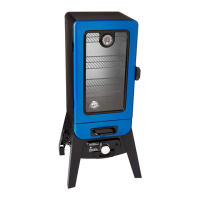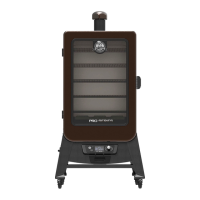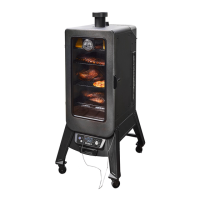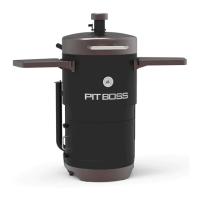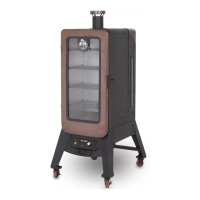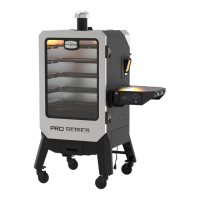18
Clean-burning barbecue wood pellets generate about 8200 BTU’s per pound with very little ash, a low moisture content (5-7%),
and are carbon neutral.
Barbecue wood pellets are produced by pure raw material (sawdust) being pulverized with a hammer-mill, and the material is
pushed through a die with pressure. As the pellet is forced through the die, it is cut, cooled, screened, vacuumed, and then bagged
for consumer use. Check with your local dealer for flavors available in your area.
Rich, smoky bacon-like flavor. Considered
the “Kings of the Woods”
Slightly sweet, but also tart. Gives a rosy
tint to light meals.
Strong, tangy, spicy flavor. Think Tex-Mex
cuisine.
Strong, sweet smoke with aromatic tang.
Perfect for red meats.
Smoky, mild sweetness flavor. Highly
recommended for baking.
Perfect blend of sweet, savory, and tart.
Used by many professional grillers.
NOTE: Always store wood pellets in a dry area. Any contact or exposure to moisture will result in lower heat output or
cause the pellets to swell and break apart. Use a moisture proof, resealable tub or bucket for proper storage.
Smoking and grilling styles of cooking can give you different results based on time and temperature. For best results, keep a
record of what you cooked, at what temperature, how long you cooked for, and the results. Adjust to your taste for the next time.
Practice makes perfect. The culinary art of hot smoking refers to longer cooking times, but results in more natural wood flavor
(and a sought-after Pink Ring) on your meats. Higher temperatures result in a shorter cooking time, locking in less smoke flavor.
TIP: For best results, allow time for meats to rest after cooking. This allows the natural juices to migrate back into
the meat fiber, giving a much juicer, flavorful cut. Resting times can be as little as 3 minutes and up to 60 minutes,
depending on the size of the protein.
CLEANING FREQUENCY TIME TABLE (NORMAL USE)
ITEM CLEANING FREQUENCY CLEANING METHOD
Bottom of Main Cabinet Every 5-6 Smoke Sessions Scoop Out, Shop-Vac Excess Debris
Fire Pot After Each Smoke Session Scoop Out, Shop-Vac Excess Debris
Cooking Grids After Each Smoke Session Burn Off Excess, Brass Wire Brush
Grease Bucket After Each Smoke Session Scrub Pad & Soapy Water
Auger Feed System When Pellet Bag is Empty Allow Auger to Push Out Sawdust, Leaving Hopper Empty
Temperature Probe Every 2-3 Smoke Sessions Scrub Pad & Soapy Water
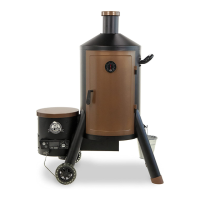
